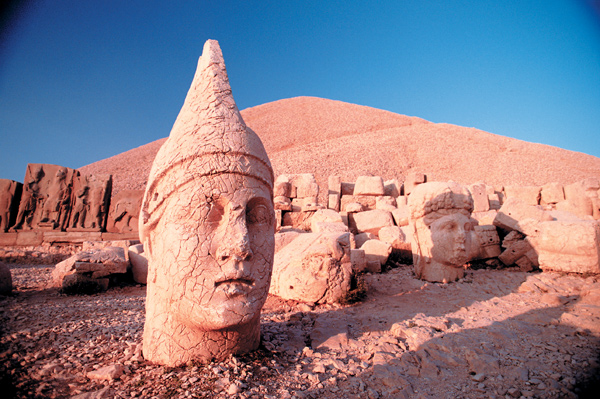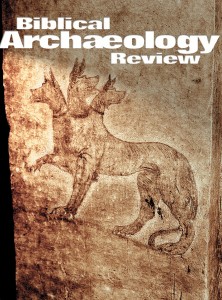
The monumental heads of King Antiochus I Epiphanes, who ruled the tiny Commagene kingdom from 64 to 38 B.C., and the goddess Commagene survey a shrine 7,000 feet above eastern Turkey. The shrine, which was built by the king, consists of two open-air temples built on terraces cut out of the mountain. Between them stands an artificial mountain peak, a 165-foot tall cone of small white rocks that is thought to be the resting place of Antiochus and some of his relatives.
The shrine is an extraordinary example of the Hellenistic ruler cult as well as a testimony to the cultural and religious syncretism of the region. Inscriptions and carvings locate King Antiochus within a double pantheon of Greek and Persian ancestors and gods. The stone heads seen here, for example, once stood atop 30-foot statues of hybrid deities. One statue combines Apollo, Helios and Hermes with Mithra, indicating the extent to which the Eastern agricultural religion of Mithraism had spread west and penetrated Hellenic beliefs. Another statue combines Zeus with the Persian deity Ahuramazda; a fourth depicts Antiochus; the fifth combines Hercules, Artagnes and Ares.
Already a library member? Log in here.
Institution user? Log in with your IP address.

